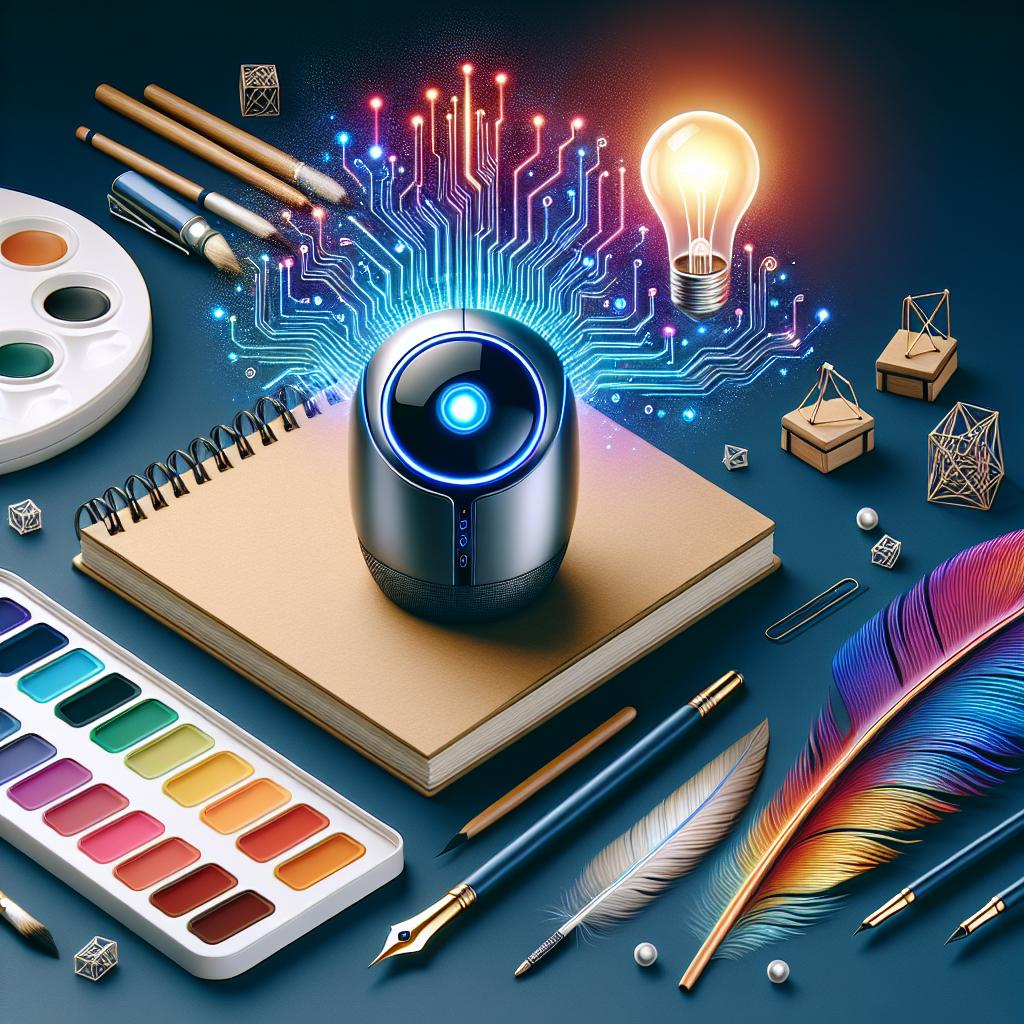In today’s fast-paced world, the use of artificial intelligence (AI) has become increasingly prevalent in various industries, including creative fields. AI has the ability to analyze massive amounts of data, detect patterns, and generate insights that can be used to inspire creativity and innovation. Leveraging AI for creative inspiration can help artists, designers, writers, and other creatives to push boundaries and explore new possibilities in their work.
One of the key ways in which AI can be used for creative inspiration is through the generation of new ideas and concepts. AI algorithms can analyze existing works of art, literature, music, and other creative outputs to identify common themes, styles, and techniques. By using this information, AI can generate new ideas that are inspired by the patterns and trends found in the data.
For example, in the field of visual arts, AI can be used to analyze thousands of paintings from different time periods and styles to identify common elements such as color palettes, brush strokes, and subject matter. Based on this analysis, AI can generate new artwork that is inspired by the patterns and styles found in the data.
Similarly, in the field of music, AI can analyze thousands of songs to identify common chord progressions, melodies, and rhythms. This information can be used to generate new music compositions that are inspired by the patterns and trends found in the data.
AI can also be used to enhance the creative process by providing recommendations and suggestions. For example, AI algorithms can analyze a designer’s previous work and provide suggestions for new design elements, color schemes, and layouts. Writers can use AI to generate new story ideas, plot twists, and character developments based on the analysis of existing literature.
In addition, AI can be used to automate repetitive tasks, allowing creatives to focus on more complex and creative aspects of their work. For example, AI can be used to generate drafts of articles, edit photos, and create basic designs, freeing up time for creatives to focus on refining and improving their work.
Another way in which AI can be used for creative inspiration is through collaboration. AI can be used to facilitate collaboration between creatives by analyzing their work and identifying areas of overlap and potential for synergy. By bringing together artists, designers, writers, and other creatives who may not have otherwise crossed paths, AI can help to spark new ideas and inspire innovative collaborations.
Despite the many benefits of using AI for creative inspiration, there are also some concerns and challenges to consider. One of the main concerns is the potential for AI to stifle creativity by limiting the range of ideas and concepts that are generated. AI algorithms are based on existing data and patterns, which may lead to the generation of ideas that are similar to those that already exist.
In addition, there are ethical considerations to take into account when using AI for creative inspiration. For example, there may be concerns about the ownership and originality of AI-generated work, as well as the potential for bias in the data that AI algorithms are trained on.
To address these concerns, it is important for creatives to approach the use of AI with caution and to use it as a tool to enhance, rather than replace, their creative process. By combining the capabilities of AI with their own unique perspectives and expertise, creatives can leverage AI for creative inspiration in a way that is both innovative and ethical.
In conclusion, leveraging AI for creative inspiration has the potential to revolutionize the way that artists, designers, writers, and other creatives approach their work. By using AI to generate new ideas, provide recommendations, automate tasks, facilitate collaboration, and enhance the creative process, creatives can push boundaries, explore new possibilities, and inspire innovation in their work.
FAQs
Q: Can AI truly inspire creativity?
A: While AI can provide insights and generate new ideas based on patterns and trends in existing data, true creativity comes from the unique perspectives, experiences, and expertise of individual creatives. AI can be a valuable tool for enhancing the creative process, but it is important for creatives to approach its use with caution and to continue to rely on their own intuition and creativity.
Q: How can creatives ensure that AI-generated work is original and ethical?
A: Creatives can ensure that AI-generated work is original and ethical by critically evaluating the output of AI algorithms, incorporating their own unique perspectives and expertise, and being transparent about the use of AI in their creative process. It is also important for creatives to be aware of potential biases in the data that AI algorithms are trained on and to take steps to mitigate these biases.
Q: What are some examples of AI tools that can be used for creative inspiration?
A: There are a variety of AI tools that can be used for creative inspiration, including Adobe Sensei for design and photography, Google’s Magenta for music composition, and OpenAI’s GPT-3 for writing and storytelling. These tools can help creatives to generate new ideas, provide recommendations, automate tasks, and facilitate collaboration in their work.
Q: How can creatives balance the use of AI with their own creativity?
A: Creatives can balance the use of AI with their own creativity by using AI as a tool to enhance, rather than replace, their creative process. By combining the capabilities of AI with their own unique perspectives and expertise, creatives can leverage AI for creative inspiration in a way that is both innovative and ethical.

